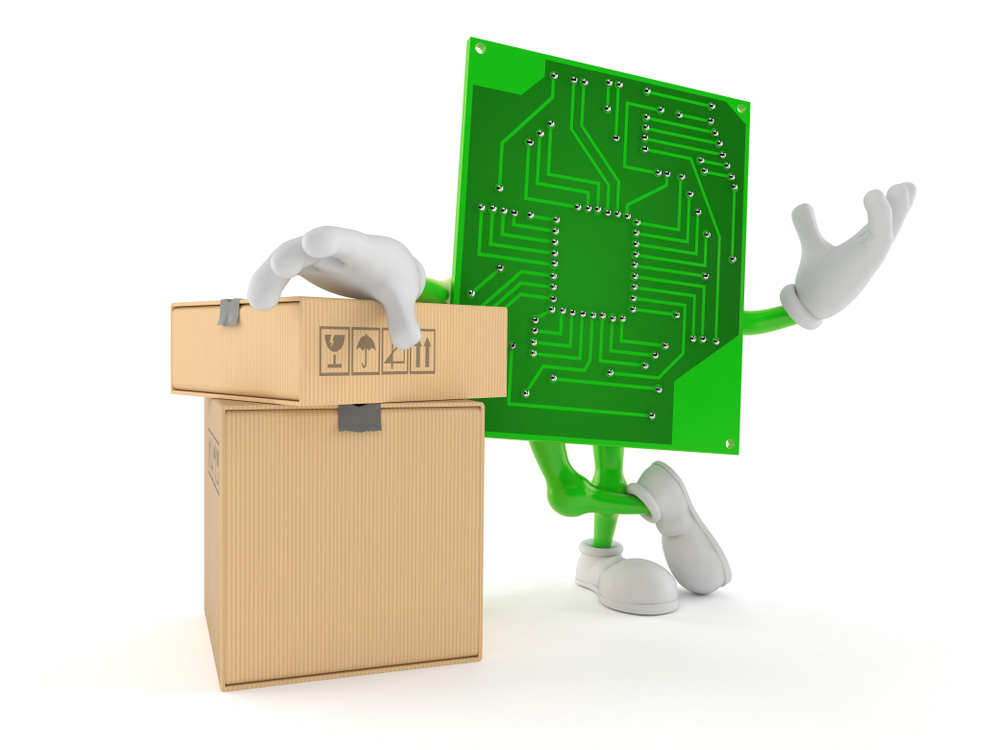
PCB suppliers who use good packaging methods are keeping their products safe from physical damage incurred during transit from the manufacturing facility to customers’ warehouses.
But just as importantly, these packaging practices help ensure shelf-life expectancy by preventing moisture absorption.
To protect their orders, PCB buyers should require suppliers to strictly follow corporate shipping specifications. There is nothing more frustrating than waiting for quality product to be built, only to then have it damaged because of poor packaging practices. Just as frustrating is to have boards become useless while sitting on the shelf.
PCBs can be very heavy. Their sharp corners sometimes wreak havoc on the corrugated cardboard boxes in which they are shipped.
A good freight spec should spell out that boards are to be vacuum-packed with a bubble wrap base, with no more than 25 boards to a stack. When a board is oversized or heavier than normal, less than that (say, 10 or 15 pieces) would be the best option.
Whatever number is used, the packaging should be consistent in count for a particular shipment.
Extra care should be taken for flexible or very thin rigid PCBs of less than 0.028” thick. They should be packaged with stiffening material on the top and bottom of the bundle to help prevent warping.
A humidity indication card (HIC) and desiccant are to be placed within the package as well. The HIC should be placed inside on top of the PCBs for easy review. The desiccant should be placed along the side or edge of the bundle, so it doesn’t contribute to bending or warping caused by the stress of the vacuum packaging.
Each bundle of PCBs should have a sticker affixed detailing the part number, date code, and number of pieces per bundle. More than one date code of the same product may be shipped together if they are segregated and marked as such.
X’d-out panels, if allowed by your PCB fabrication specifications, should be packaged separately and clearly marked, as well.
The individual packages of PCBs should be placed tightly in a box, with Styrofoam or other shock- absorbing material placed between the packages and the wall of the shipping container. The PCB corners should be protected, as they can be easily dinged or dented while in transit.
The weight of each box should not exceed 30 pounds. Boxes may have exterior strapping applied when the PCBs are over-sized or heavier than normal.
Each box should have a sticker on either end identifying its contents, which should include the part number, purchase order number, date code, and number of pieces within the box.
Each part number shipped should come with a packing slip and “proof of quality” documentation to include but not be limited to:
- the certificate of compliance
- a first article or dimensional report
- a microsection report to include a solderability test with a cross-section
- an electrical test report
- an ionic contamination report
- a TDR report (controlled impedance, when applicable)
- any material certifications
- and any other documentation required by the purchase order.
When the product is shipped, the supplier should notify the customer’s purchasing, receiving, and accounting departments of method of shipment and tracking number. The commercial invoice and electronic copies of the quality paperwork should be included in case such documentation for the shipment is lost in transit.
Need help managing your PCB suppliers? Reach out to me at greg@directpcb.com.
Click here to get a free copy of my book, PCB Basics for Buyers.
